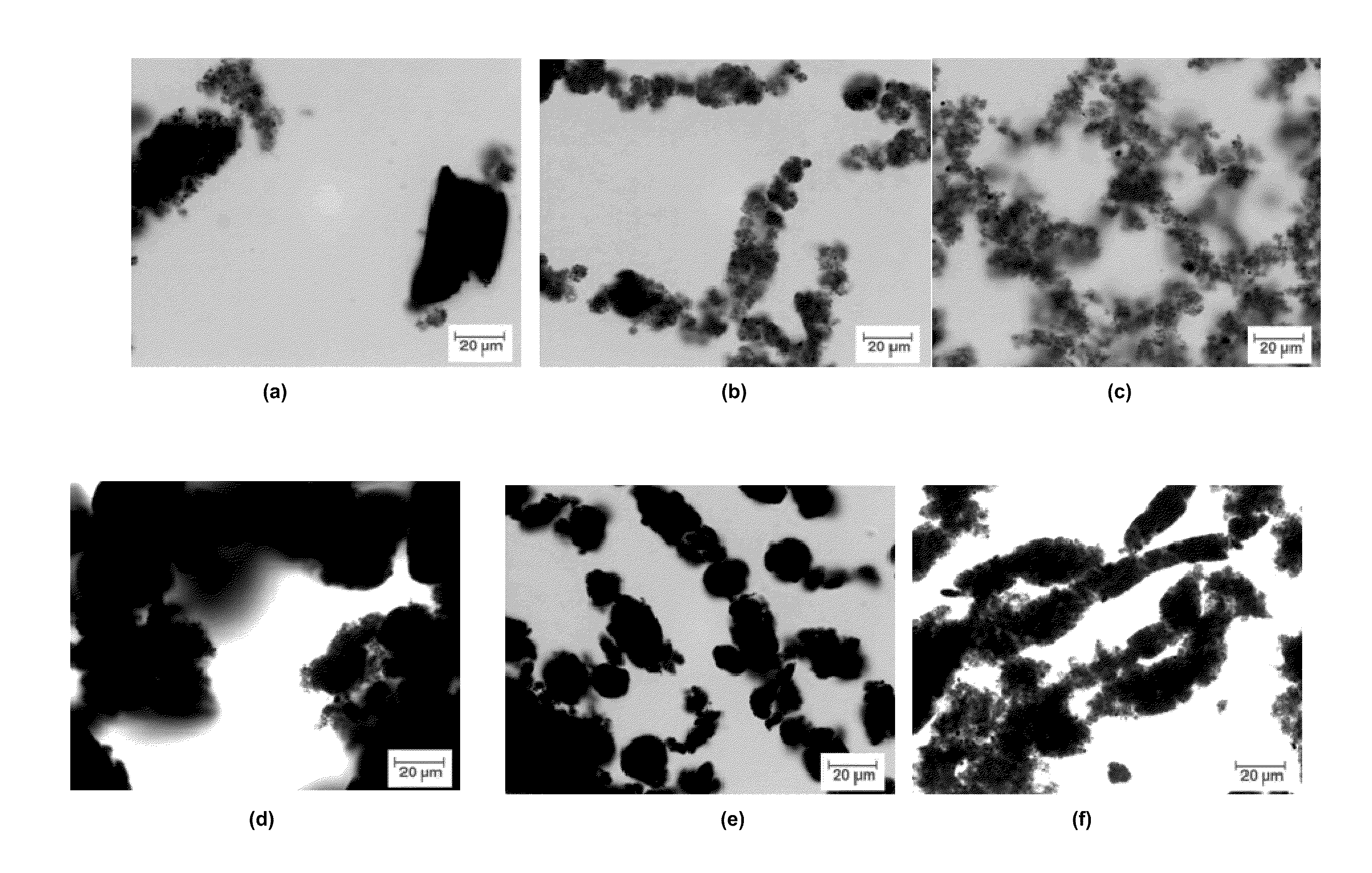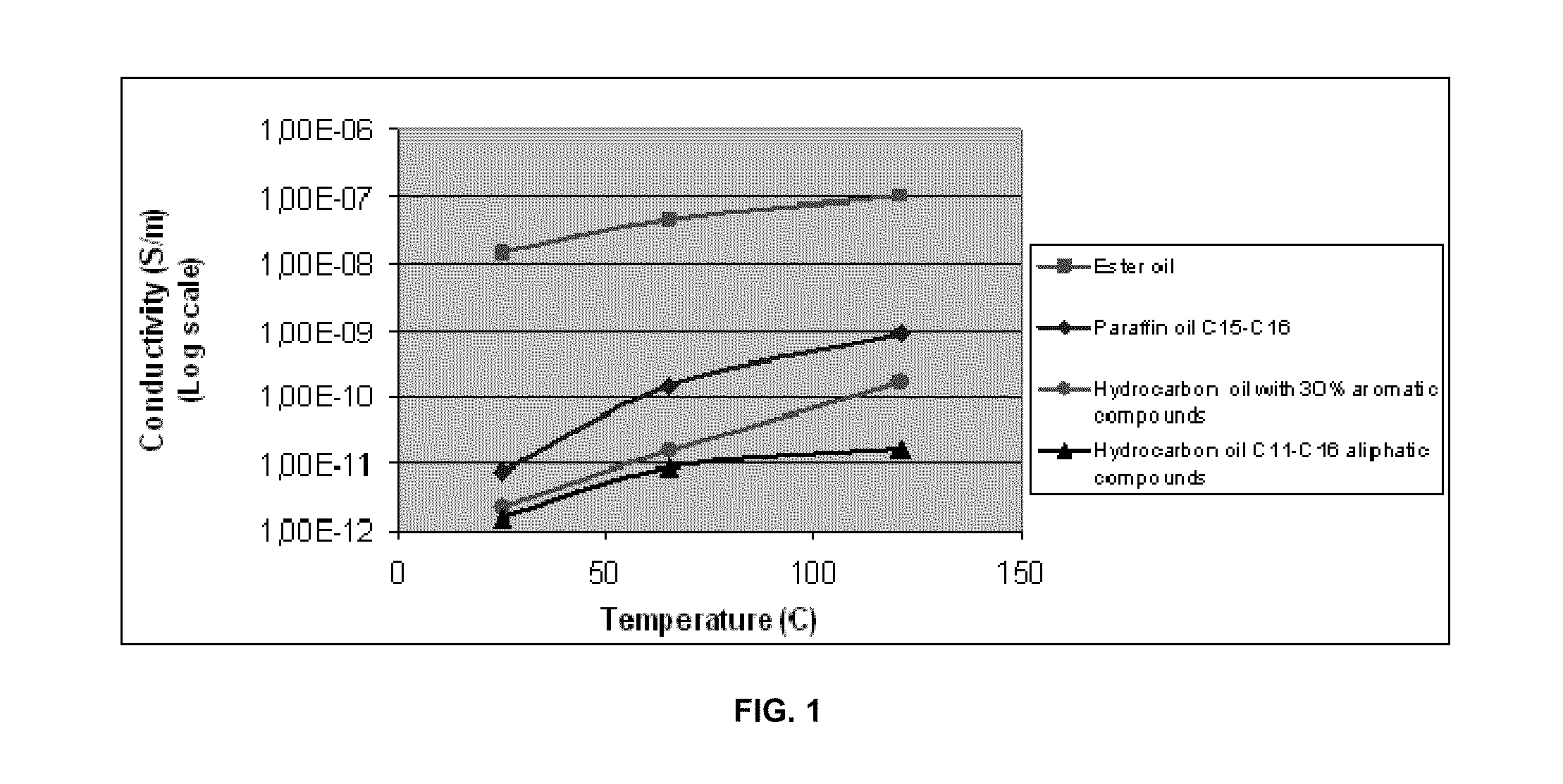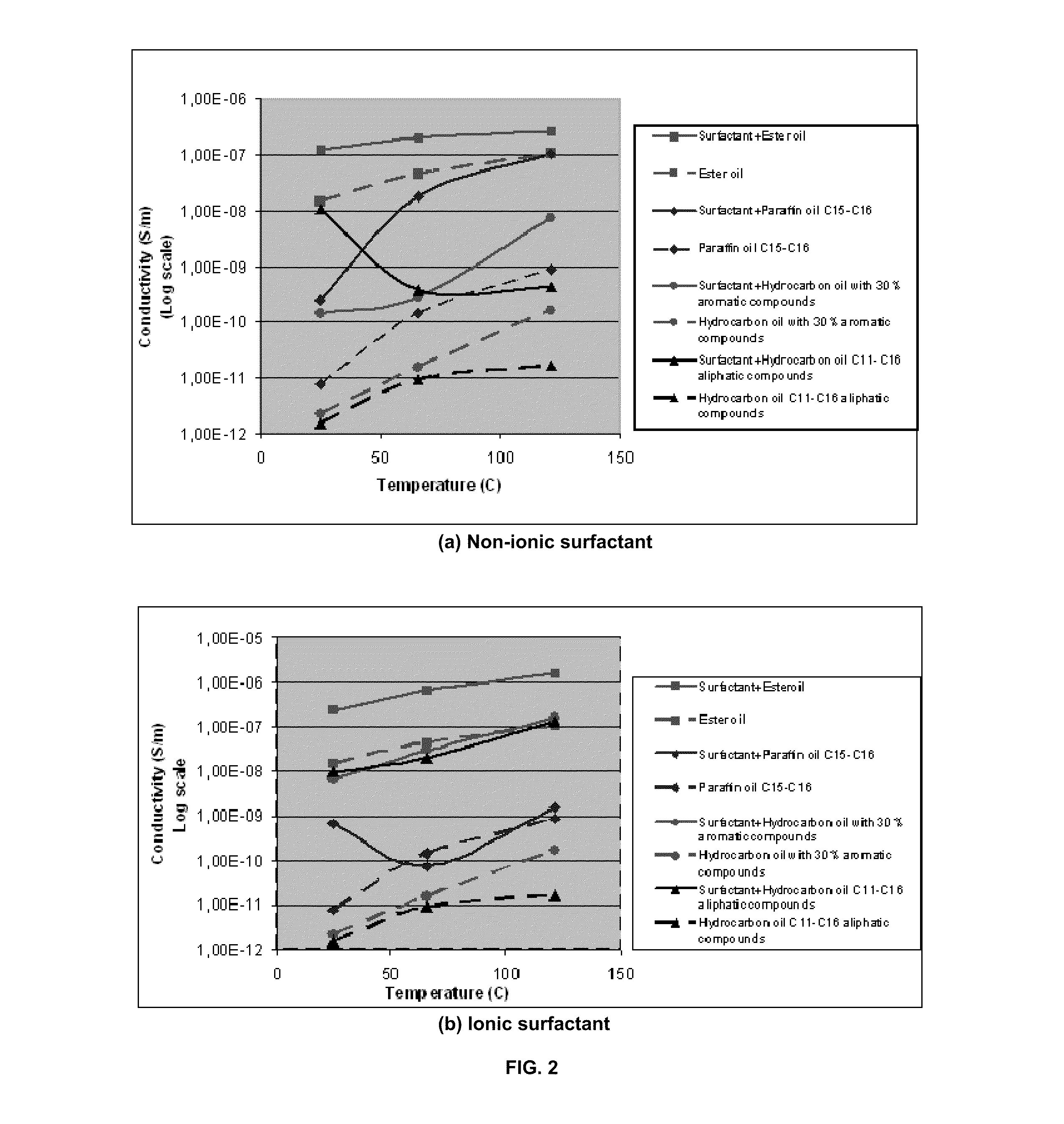Electrically Conductive Oil Base Drilling Fluids Containing Carbon Nanotubes
a technology of carbon nanotubes and drilling fluids, which is applied in the direction of nanotechnology, drilling compositions, chemistry apparatuses and processes, etc., can solve the problems of increasing borehole instability, ineffective conventional resistivity-imaging devices, and inability to replace oil mud with a conductive wbm for drilling with resistivity tools, etc., to achieve low electrical resistivity, high electrical conductivity, and high resolution capability
- Summary
- Abstract
- Description
- Claims
- Application Information
AI Technical Summary
Problems solved by technology
Method used
Image
Examples
example 1
[0065]The surfactants (an alkyl pyrrolidone, commercially available as SURFADONE® LP-300 from ISP), and a succinate, commercially available as TRITON® GR-7M from The Dow Chemical Company, were added to the oils (an ester oil commercially available as BDMF VLV, a product of Oleon; a C15-C18 paraffin oil; a hydrocarbon oil containing 30% aromatic compounds; and a hydrocarbon oil containing C11-C16 aliphatics) and stirred for 30 minutes at room temperature. The electrical conductivity of the pristine oils and the solutions of surfactants in oils were measured at room temperature, 150 F (65.5° C.) and 250 F (121.1° C.). During the measurements, the temperature of the samples was kept constant by use of a thermostat ISOTEMP 210.
[0066]The electrical conductivity of oils used to formulate drilling fluids is very low, at both room temperature and high temperatures. As an example, FIG. 1 shows the evolution with temperature of the electrical conductivity of four oils. At room temperature the...
example 2
[0068]Electrically conductive dispersions of industrial grades carbon nanotubes in organic phases (oils) of oil base drilling fluids were prepared by sonication and microfluidization. Carbon nanotubes from various suppliers were dispersed in various oils, optionally in the presence of commercially available surfactants (ionic, non-ionic, or polymeric). Prior to processing, the nanotubes were “oil pre-wetted”. The carbon nanotubes were added to the solutions of surfactant(s) in oil and stirred with a magnetic stirrer or a mechanical stirrer for 10 to 30 minutes or to oils and sonicated for 30 to 60 seconds. The dispersions contained 0.2 wt % of carbon nanotubes.
[0069]For the preparation of dispersions, a Misonix Sonicator 4000 equipped with a standard ultrasonic probe (ø=12.7 mm) was used. Alternatively a Microfluidizer Processor, model M-110P equipped with either a H10Z (100 μm) interaction chamber or H30Z (200 μm) interaction chamber was employed. When the sonicator has been used, ...
example 3
[0077]Unweighted and weighted electrically conductive oil base drilling fluids with carbon nanotubes with various compositions were prepared. The fluids contained additives as thinners, filtration control agents, viscosifiers, other than the carbon nanotubes, rheological modifiers, weighting materials etc. The fluids may have a continuous base that is an invert emulsion or oil. The selected components and the carbon nanotubes were added to a chosen oil base in a particular sequence. The electrical conductivity / resistivity of the fluids was measured after preparation, aging and over certain periods of time. The reological behaviour of the drilling fluids, their thixotropic properties and filtration control properties at high pressure high temperature (HPHT filtration control) were assessed according to the standardized methods for oil base drilling fluids. The fluids described were prepared by either the addition of an electrically conductive dispersion of carbon nanotubes in oil to ...
PUM
| Property | Measurement | Unit |
|---|---|---|
| diameter | aaaaa | aaaaa |
| electrical resistivity | aaaaa | aaaaa |
| electrical resistivity | aaaaa | aaaaa |
Abstract
Description
Claims
Application Information
 Login to View More
Login to View More - R&D
- Intellectual Property
- Life Sciences
- Materials
- Tech Scout
- Unparalleled Data Quality
- Higher Quality Content
- 60% Fewer Hallucinations
Browse by: Latest US Patents, China's latest patents, Technical Efficacy Thesaurus, Application Domain, Technology Topic, Popular Technical Reports.
© 2025 PatSnap. All rights reserved.Legal|Privacy policy|Modern Slavery Act Transparency Statement|Sitemap|About US| Contact US: help@patsnap.com



